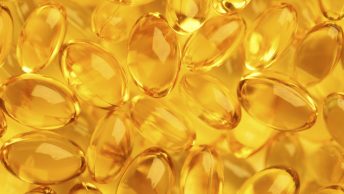
Unlike our ancestors who used their muscles for everyday activities and lived a physical lifestyle, our lifestyles are comparatively sedentary. Body fat is accumulated in unwanted places and the perfect body shape is a dream. Getting rid of the fat seems an almost impossible task. Fortunately, with the advancement in science, there are ways we can do something about that.
Just like sculpting a figure, body sculpting is the new term used to describe cosmetic surgery that is intended to change a person’s body contours to achieve a perceived perfect physique.
It is most natural for fat to deposit in specific areas of our body and can impact an otherwise perfect physique. These localized fat deposits often are hereditary, such as in the neck, chin, arms, abdomen, breasts, flanks, knees, thighs and buttocks.
There are a couple of popular methods available for us to get rid of these deposits and shape our bodies the way we want; liposuction and lipolysis.
Liposuction was first performed in 1974 and has advanced over the years. It is now considered as one of the safest body shaping and contouring surgeries that helps in removing unwanted fat from specific areas. Fat cells are taken out from under the skin using a vacuum-suction cannula (a hollow instrument that looks like a pen) or with the use of an ultrasonic probe that breaks up the fat into small pieces and removes it with the help of suction.
Lipolysis on the contrary is a procedure where there is a breakdown of fat that is stored in fat cells, which means melting down of fat in the body through injections without any procedure. It works for spot reduction of fat. The fat cells are dissolved into liquid and eliminated from the body through urine and feces. It takes about two weeks for the results to be noticed.
Liposuction procedure works best for areas where stubborn fat deposits refuse to go away even with weight loss programs, such as the hips, thighs, buttocks, neck, face, back, arms or calves. Experts say that it is only to be used as a mechanism to get rid of localized fat and not as a weight loss measure. A liposuction procedure is usually done for more than one area at the same time.
Some men with gynecomastia also use this procedure to reduce their breast size or to remove lipomas but generally it is meant to be used for cosmetic body shaping purposes. The scarring is much less when compared to other plastic surgery procedures.
It is essential to have realistic expectations when considering liposuction. Although results can be dramatic, they may not be immediate. The success of this surgery depends on several factors, like the age, weight, general health and skin elasticity. This procedure is not advised for people with diabetes, heart or artery problems, history of blood clots or insufficient blood flow. A perfect candidate would be one with normal weight, healthy, good skin elasticity and troubled areas that do not respond to exercise or diet.
Licensed dermatologists or plastic surgeons perform liposuction surgery. There may be complications after a liposuction procedure even if it is performed by the most experienced physician. It has to be performed at a hospital, surgical center or a doctor’s office.
Lipolysis is performed by releasing free fatty acids into the bloodstream for them to circulate in the body. Small injections of Phosphatidylcholine (PPC) are administered locally, directly into the subcutaneous tissue. Multiple injections will be needed to cover an area. In that region, the local fat deposits are destroyed and the fat stored in the cell is released, which results in a reduction of body circumference in that area. It is said that women respond better to the treatment than men due to the difference in structure of the fat cells and connective tissue.
Phosphatidylcholine is a natural product in our body that helps emulsify fat and cholesterol. It has been used for its cholesterol lowering properties for a long time and it is said to protect the liver. Experts say that lipolysis is good for soft fat, while fibrous fat may be more difficult to treat, as the fat cells only weaken instead of bursting.
Lipolysis is considered to be mild when compared to other cosmetic procedures available; although, patients do experience soreness, mild swelling, bruising on the specific areas which lasts for a week or so. Some people have noticed small painless lumps in the area. There have been reported some uncommon side effects, such as nausea, vomiting, fever, diarrhea, and rarely infection and prolonged bruising. Doctors reveal that patients with cardiovascular diseases, malignant disorders, kidney diseases and blood disorders are advised not to undergo this treatment.
Whatever the treatment you undergo; whether it is liposuction of lipolysis, a follow up routine of exercise and a healthy diet is essential to maintain the weight that has been reduced as fat cells can grow fast if a conscious effort is not made to keep them off.











